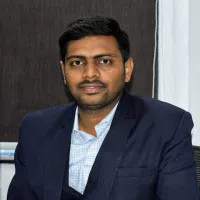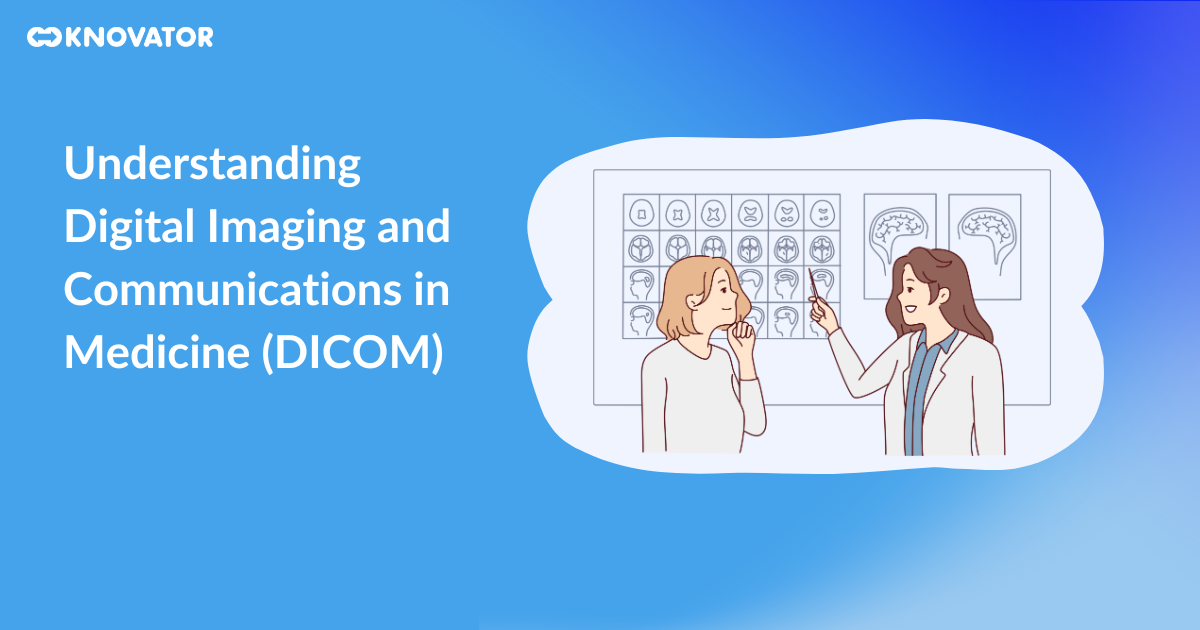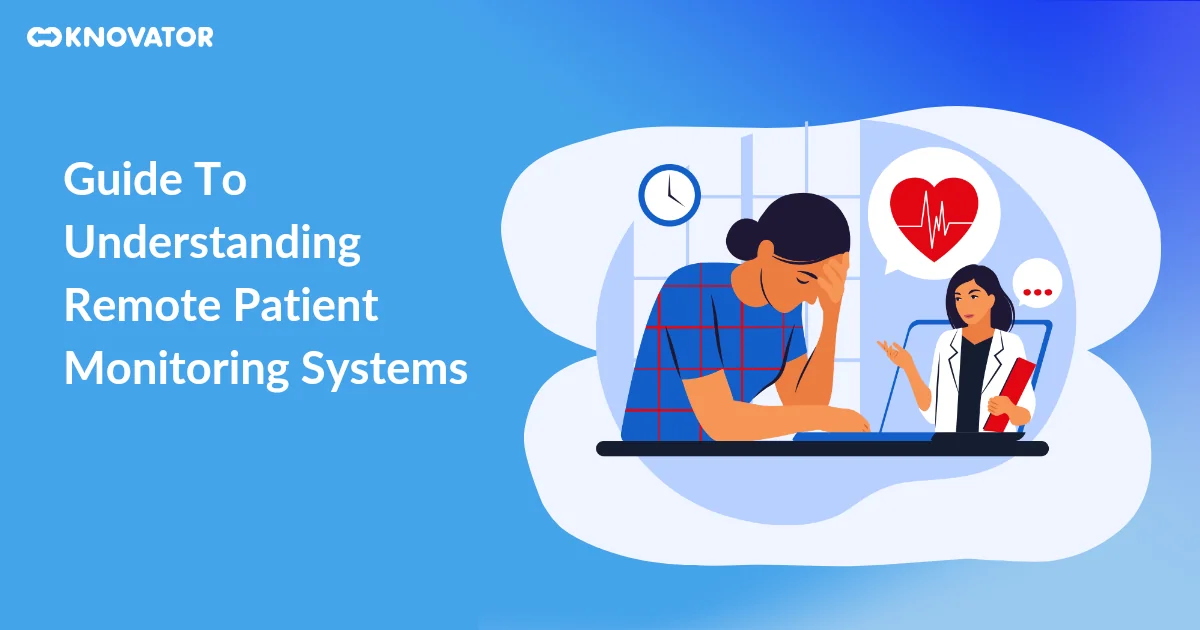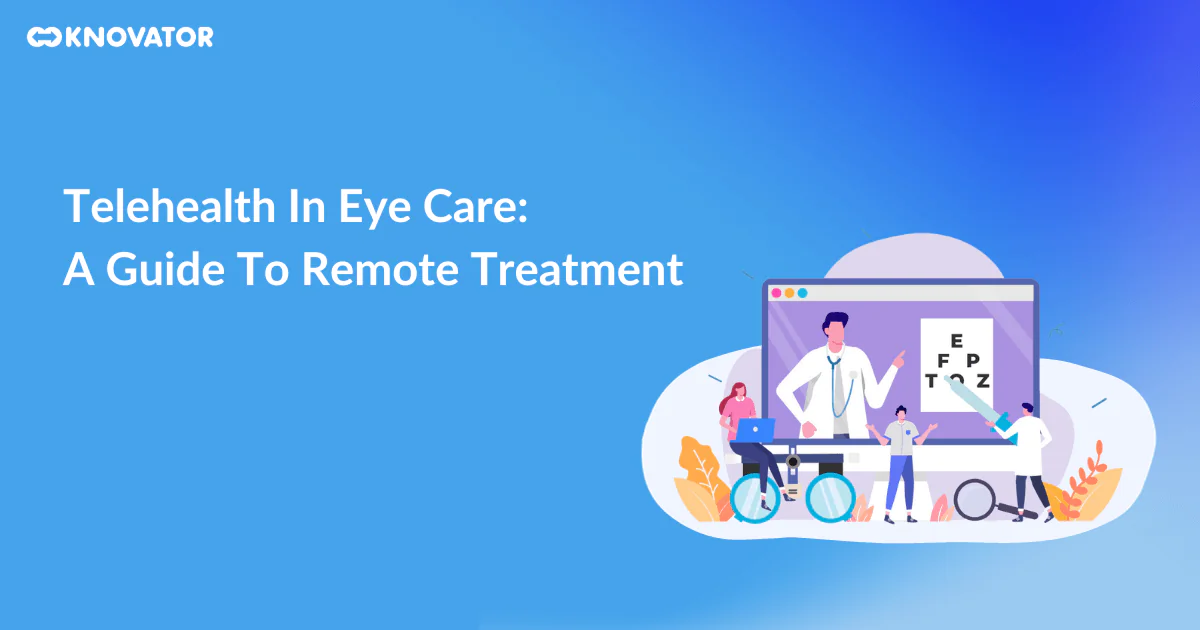The use of telehealth is skyrocketing since 2020. Do you have any idea how much? According to Health Affairs Journal, as of April 2020, about 1.7 million Medicare beneficiaries received telehealth services.
The size of the telehealth market is projected to reach about USD 559.52 billion by 2027, with a CAGR of 25.2%.
Before the recent uptick, these innovative healthcare delivery models and telehealth app development services were already rising.
Telehealth has tremendous potential to bridge the gaps in healthcare delivery and save the costs of avoidable adverse drugs & admission in the general ward.
It also helps patients in medication management. It is a boon to patients overcoming barriers to healthcare access in rural and remote areas.
Telehealth market outlook in 2023

The factors for rapid growth in the telehealth market are:
- Proven positive effects of distant health control
- The speedy increase in medical expenses for government/private fields
- The rapid development of chronic health conditions
- Switch to client-oriented delivery of medical treatment
- Effective prevention and treatment need for COVID-19
- The necessity to enrich the knowledge of mental health
A massive burden was there on the global healthcare industry because of the outbreak of the covid 19 pandemic.
Simultaneously, numerous opportunities have occurred for digital health platforms. People have started avoiding visits to hospitals and clinics to prevent transmission. They preferred virtual consultations to reduce the time and the cost.
Best ideas to start a telehealth business:

Once you have decided to start up your telehealth business, the next step is to decide on options available for telehealth solutions.
This blog will help you understand how forms of telemedicine differ and what makes them worthwhile to achieve the goals of your telemedicine program.
Related : Telemedicine App Development Services
Remote Patient Monitoring
1. What Remote Patient Monitoring is:
Remote patient monitoring is a virtual health care service. With the help of RPM, healthcare providers monitor and electronically capture medical and other health data from patients. Medical personnel use it for assessment, recommendations, and instructions.
Remote patient monitoring systems collect health data including vital signs, such as blood pressure, weight, heart rate, blood sugar levels etc. That can occur anywhere the patient is situated. It excludes an in-person visit to the practice.
The patients are not in a shared space with the healthcare provider. It means the patient can be at their home, office, on vacations, in a skilled nursing facility or any other location. And still, get Remote patient monitoring services and get its benefits.
2. Which gaps are currently present in the healthcare industry:
There are several ongoing challenges in traditional healthcare, such as medical data, analytics, technology, and interoperability. Other challenges are consumer access, privacy, and security.
Other issues are disparate, non-standard, unstructured, highly variable data, medical and pharmaceutical costs to access and quality of care.
3. How RPM technology could fill these gaps:
Integrating and improving the exchange of patient data to improve health outcomes, reduce administrative burdens, and support transition from volume to value and facilitate individual /provider /payer effectiveness. It provides benefits such as reduced costs, transparency and patient satisfaction.
4. What will be the future of RPM in the healthcare industry:
(Source: Business Insider)
23.4 million U.S. patients used remote patient monitoring services and tools in 2020, according to the survey conducted by Insider Intelligence.
By the year 2024, remote patient monitoring tools and services are expected to reach 30 million patients in the United States.
Asynchronous Telemedicine
1. What Asynchronous telemedicine is:
There is no continuous real-time interaction between patient and provider or between providers in asynchronous care.
It is an offline store-and-forward approach. Patients complete the questionnaire or a form. After that, such information is reviewed, assessed and responded to by the clinicians.
These asynchronous approaches represent technology-enabled virtual health interactions – the next level of healthcare provides more convenient and efficient healthcare services.
2. Which gaps are currently present in the healthcare industry:
Typical in-person visit at the clinic or hospital takes about 20 minutes and video visits take about 10 minutes. Sometimes, patients are not able to visit the clinician. Patients may find difficulty initiating care interaction with the medical personnel when needed.
3. How asynchronous telemedicine technology could fill these gaps:
An asynchronous visit is complete in about 3 minutes or less. It provides a robust and differentiated self-service experience for patients.
As asynchronous service is available through many devices, patients can initiate care interaction from where they are. Digital care delivery models accelerate by asynchronous care.
4. What will be the future of asynchronous telemedicine in the healthcare industry
Asynchronous care will likely become table stakes for health systems in the coming 18-24 months. Technology is getting advanced, and the tools continue to get smarter.
It helps providers in more ways and at higher levels of accuracy. Moreover, the distinction between modalities will disappear.
The medical care system will be optimized automatically for modality and location, based on clinical requirements and patient preference.
Synchronous Telemedicine
1. What Synchronous telemedicine is:
The most common form of real-time, virtual, direct-to-patient appointment is Synchronous care. The patient interacts with a provider, usually via phone or video in live, real-time settings.
Patients and providers make direct communication. And conclude the diagnosis, treatment plan or prescription.
2. Which gaps are currently present in the healthcare industry:
People who live far from specialists get less healthcare. The Aging and rural population who suffer from higher rates of chronic health problems avoid visiting their clinician.
They do not consult doctors until an emergency occurs. The rural population has more exposure to environmental hazards, such as chemicals used for farming.
3. How synchronous telemedicine could fill these gaps:
Synchronous telemedicine offers real-time health care to patients. Critical patient information can be captured at the scene using smartphones with the help of top alerting software. After that, it alerts ED by securely transmitting data, photos, and videos.
Such information is used by ED to better prepare for cases with high acuity, activate labs, contact all necessary staff, save valuable time and facilitate better patient outcomes.
4. What will be the future of synchronous telemedicine in the healthcare industry
Over the forecast period, 2019 to 2026, the telemedicine market is estimated to grow at a CAGR of 14.9%. More and more hospitals and healthcare facilities bring this technology online.
Synchronous telemedicine potentially reduces healthcare costs, improves patient outreach and health outcomes. It also changes the way providers treat their patients.
Self-Diagnostics Solutions
1. What Self-diagnostics solution is:
A self-diagnosis solution helps to diagnose or identify a medical condition in oneself. Many self-diagnosis platforms with artificial intelligence are widely available and the general public makes good use of them.
The abundance of healthcare information is available for people to access whenever they need it.
As a result, to diagnose urgent and non-urgent ailments, many adults regularly access such platforms. The majority of them trust the information and successfully diagnose themselves.
2. Which gaps are currently present in the healthcare industry:
Sometimes the patients are not sure whether they should seek medical care and how urgently. For example, they can not decide whether they should visit the emergency department or a practitioner’s clinic.
For certain diseases such as cancer, alerting patients to seek assistance as early as possible may increase survival rates.
3. How self-diagnostic solutions could fill these gaps:
Self-diagnosis solutions could be extremely beneficial in reducing unnecessary visits to healthcare centres and waiting times for an official diagnosis.
It saves time and costs and patients get faster & accurate treatment if self-diagnostic tools are certified by medical professionals from credible sources and can produce correct diagnoses consistently.
4. What will be the future of self-diagnostic solutions in the healthcare industry
Concerns raised that when an ageing population increases demands on the health services, whether current financial models used in the healthcare systems will continue to sustain.
Discouraging people from an unnecessary visit to the clinic may be a solution to ease the demands.
Therefore, self-diagnosis solutions are beneficial in reducing patient waiting lists and making healthcare reachable for all.
NFT in telehealth
1. What NFT in telehealth is:
NFTs are equivalent to a certificate of authenticity, Unlike cryptocurrencies, which are used as a form of money or digital asset. They act as a permit to own a portion of a digital representation of a tangible asset.
In the entertainment industry, it is straightforward to see the advantages of NFTs. In the world of healthcare, the same framework can apply.
As far as NFT is concerned with the healthcare industry, health data, pharmaceutical drugs and blood composition are represented by NFTs.
2. Which gaps are currently present in the healthcare industry:
Nowadays, patients are aware of their data’s existence. But usually, patients do not have access to it or any control over where it goes.
To develop healthcare algorithms using patient records, Alphabet Inc.’s Google and national hospital chain HCA Healthcare Inc. HCA struck a deal recently.
It is the latest foray by a tech giant into the $3 trillion healthcare sector. The data spun off from patients in real-time.
3. How NFT could fill these gaps:
NFTs would enable patients to track how their data is used.
An NFT would also guarantee ownership and mark off the data – belonging to that particular person for identification.
It will enable the patient to access it and track where it goes. It also provides the owner of the data with residual income. It can apply to other research initiatives intended to use patient-generated data.
4. What will be the future of NFT in the healthcare industry
2020 saw the rise of non-fungible tokens or NFTs. Everything – from digital art to bits of the video, was exchanged with NFTs.
Sales of non-fungible tokens – the NFT sales have reached more than $2 billion In the first part of 2021 alone, as per the report from NonFungible.com.
Blood donation organizations encourage the use of the non fungible token in healthcare.
Using NFTs particular batch of drugs to make it easy to track and mark it off as authentic the manufacture of pharmaceuticals could mark.
Virtual therapy for mental health
1. What virtual therapy for mental health is:
Due to the advent of teletherapy services, psychotherapy is more accessible and convenient than ever.
These platforms make it possible for people of all demographics to get the help they need seeking psychological and psychiatric assistance.
2. Which gaps are currently present in the healthcare industry:
The most common mental illness in the U.S. is anxiety disorders, as per the study done by the Anxiety and Depression Association of America.
Every year 18.1% of the population or 40 million adults are affected by an anxiety disorder.
Moreover, children between 13 and 18 years old are affected with anxiety disorders.
It causes a much higher risk of poor performance in school, getting engaged in substance abuse and missing out on vital social experiences.
Although disorders from anxiety are highly treatable, only 36.9% of those suffering receive treatment. Due to a perceived societal stigma, men are far less likely to seek treatment.
3. How virtual therapy for mental health could fill these gaps:
The National Center for Telehealth & Technology suggested in a study that the patients fearing visit psychologists in-person mobile solutions can help those and can better fit diverse needs and lifestyles than traditional methods.
Virtual therapy for mental health can make behavioural health care more accessible, efficient, and interactive for patients. It can improve the delivery of evidence-based treatments.
4. What will be the future of virtual therapy for mental health in the healthcare industry:
A survey from YouGov for Forbes Health of more than 1,200 U.S. adults found that 21% of people have used a teletherapy service within the past year.
A staggering 63% of those who have used a service found it an effective form of treatment.

Wrapping up
Telehealthcare has displayed the ability to slow the transmission of the virus during the current crisis of covid 19 by maintaining social distance.
It helps keep people away from the healthcare centres where they are likely to contract the virus. This innovation will continue to develop into multiple avenues of healthcare.
Share the scope of your project, time scales, technical requirements, business challenges, and other details you consider necessary with your technology partner for custom telehealth software development.










